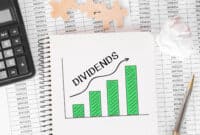 With fears of a new economic downturn, investors have become concerned about sales and profits of large companies. But there are companies that have already proven themselves in the recent recession. They also offer investors income through dividend, or are positioned well within global industries, or those that perform well in downturns. Using such characteristics, 24/7 Wall St. picked America’s recession-proof companies.
With fears of a new economic downturn, investors have become concerned about sales and profits of large companies. But there are companies that have already proven themselves in the recent recession. They also offer investors income through dividend, or are positioned well within global industries, or those that perform well in downturns. Using such characteristics, 24/7 Wall St. picked America’s recession-proof companies.
The most attractive stock investments for periods when GDP growth stalls are those of corporations that proved they could improve sales during the 2007-2009 recession. Many of these corporations have additional attractions. They often generate so much cash they can afford to pay large dividends. This gives investors yields when the value of many equities fall due to concerns about the economy and in a period that interest rates on bonds are near all-time lows.
Recession-resistant companies are also often part of recession-resistant industries. Many of these industries’ sales come from a number of countries around the world. Their sales may slow in the U.S. and Europe, but remain strong in emerging nations. Coke and P&G are examples of corporations in such industries. Other companies are in sectors whose products are used in almost any economic environment. Tobacco companies like Altria and Reynolds American are examples of these. Still other industries have companies that have appeal in an economic downturn. McDonald’s, which offers many meals for a few dollars, often prospers when people cannot afford fresh groceries or more expensive restaurants.
24/7 Wall St. picked its recession proof companies by choosing: 1) corporations with revenue that grew during the last recession or where sales dropped slightly and profits rose, 2) companies in industries that are not usually sensitive to changes in the economy, 3) corporation that have demonstrated they have the balance sheet to pay large cash dividends, 4) corporations that are large enough to be among the most dominant companies by sales or market share within their sectors, and 5) stocks that trade within 10% of their 52-week highs. With the S&P 500 near a one year low, these are obviously companies that Wall St. thinks will do well over the next several quarters.
This is the 24/7 Wall St. “America’s Recession-Proof Companies”
15. Kimberly-Clark
> 52 wk high/low: $71.78/$61.00
> % of 52 wk high: 98.4%
> Industry: consumer goods
> Dividend yield: $2.80 (3.90%)
> Revenue first half: $10.288 billion
> Net income first half: $758 million
Kimberly-Clark Corp. (NYSE: KMB) owns some of the best-known brands in the U.S. consumer products sector. Personal care products such as Kleenex, Kotex, Huggies, and Depends are household staples. The company is counted among the Standard & Poor’s Dividend Aristocrats, an index of 42 companies that have increased dividends every year for at least 25 years. Strong personal care brands with which customers have developed a relationship over a long period of time are almost guaranteed to carry Kimberly-Clark through any recessionary downturn. Perhaps the most important indication that Kimberly is not affected by the economic climate is that both its sales and net income grew through the last recession.
14. Colgate-Palmolive
> 52 wk high/low: $94.89/$73.62
> % of 52 wk high: 93.1%
> Industry: consumer goods
> Dividend yield: $2.32 (2.60%)
> Revenue first half: $8.179 billion
> Net income first half: $1.198 billion
Colgate-Palmolive Co. (NYSE: CL) also includes a vast stable of well-known personal and home care products, as well as pet nutrition products. Detergent Fresh Start, Colgate toothpaste, Mennen deodorants, and Hills pet foods are among the company’s brands. The company posted a new 52-week high in mid-September following an announcement that it would repurchase 50 million shares of common stock. As with other consumer products stocks, the value of Colgate-Palmolive products resides in its customers’ loyalty, and the fact that most of these are inexpensive items most people cannot do without. As the economy turned down, Colgate’s revenue rose from $13.8 million in 2007 to $15.6 million last year.
13. Procter & Gamble
> 52 wk high/low: $67.72/$57.56
> % of 52 wk high: 92.8%
> Industry: consumer goods
> Dividend yield: $2.10 (3.30%)
> Revenue first half: $41.09 billion
> Net income first half: $5.383 billion
Proctor & Gamble Co. (NYSE: PG), like the other consumer products companies on this list, offers brands that are household names. Tide laundry detergent, Gillette razors, Iams pet foods, and Bounty paper products are just a few of them. Like Kimberly Clark, P&G is included in S&P’s Dividend Aristocrats index. P&G could well be the leading consumer products marketing company in the U.S., if not the world. P&G’s product management skill, coupled with its strong brands help maintain sales. The company has also lowered some of its prices to keep its customers during tough times and to keep volume high. Although P&G’s sales dipped in its fiscal 2008, they rose from 2007 to 2011. The company’s financial strength allowed it to pay down $1 billion in long-term debt over that same period.
12. Abbott Laboratories
> 52 wk high/low: $54.24/$45.07
> % of 52 wk high: 92.5%
> Industry: pharmaceuticals
> Dividend yield: $0.48 (3.8%)
> Revenue first half: $18.657 billion
> Net income first half: $2.806 billion
Abbott Laboratories (NYSE: ABT) makes a variety of pharmaceutical and nutritional products, medical devices, and diagnostic instruments and tests. Some of its best known brands are pain reliever Vicodin and nutritional products Pedialyte and Ensure. Abbot Labs is also included among the S&P Dividend Aristocrats. The company operates in more than 130 countries. The need for medical equipment and essential drugs are not greatly impacted by a slow economy. Abbott’s net income rose 28% between 2007 and 2010.
11. Bristol-Myers Squibb
> 52 wk high/low: $31.93/$24.97
> % of 52 wk high: 98.6%
> Industry: pharmaceuticals
> Dividend yield: $1.32 (4.20%)
> Revenue first half: $10.445 billion
> Net income first half: $1.888 billion
Bristol-Myers Squibb Co. (NYSE: BMY) may not exactly be a household name, but a couple of its prescription drugs are. The company’s Plavix is one of the best selling blood pressure medicines in the world and its Abilify anti-depressant is among the leaders in its field. The company continues to develop new drugs to treat illnesses that affect large numbers of people. Like Abbott, Bristol’s global reach and its strong product portfolio give it substantial protection from recession. Sales of the company’s cardiovascular drugs Plavix and Avapro rose sharply during the recent downturn, and Bristol-Myers sharply increased margins by cutting $2.5 billion in expenses over the last two years.
10. Johnson & Johnson
> 52 wk high/low: $68.05/$57.50
> % of 52 wk high: 91.2%
> Industry: pharmaceuticals
> Dividend yield: $2.28 (3.60%)
> Revenue first half: $32.77 billion
> Net income first half: $6.252 billion
Johnson & Johnson (NYSE: JNJ) lays claim to a seat in the both the consumer products and drug sectors. The company’s brands include Tylenol, Band-Aid, Rogaine, and Listerine. Prescription drug products include Topamax for migraine and Procrit for anemia in dialysis patients. J&J also makes medical devices, including prostheses and stents. The company is among the S&P Dividend Aristocrats. J&J’s OTC sales have been hurt in the last several quarters because of product recalls. Losses of the sales of those products have been more than offset by revenue improvement from its medical devices and pharmaceutical divisions. Revenue rose from $61.1 billion in 2007 to $61.6 billion last year.
9. General Mills
> 52 wk high/low: $40.00/$34.54
> % of 52 wk high: 94.9%
> Industry: food
> Dividend yield: $1.22 (3.20%)
> Revenue first half: $7.494 billion
> Net income first half: $797.7 million
General Mills Inc. (NYSE: GIS) owns some of the best selling food brands in the U.S. Cheerios and Wheaties are two of its better known cereal brands. The company also makes Betty Crocker and Pillsbury branded foods, as well as Yoplait yogurt products. The breadth and depth of the company’s cereal and grain products provide diversity in terms of revenue sources. General Mills also sells its products in 130 countries, which gives it the ability to capitalize on expansion in developing markets where GDP growth is faster than in the U.S. or Europe. General Mills revenue rose each year from fiscal 2007 to fiscal 2011.
8. McDonald’s
> 52 wk high/low: $91.22/$72.14
> % of 52 wk high: 94.3%
> Industry: food
> Dividend yield: $2.80 (3.20%)
> Revenue first half: $13,017 billion
> Net income first half: $2,619 billion
McDonald’s Corp. (NYSE: MCD) operates more than 33,000 stores in 118 countries around the world. Dining out in tough economic times tends to send customers to lower priced options that offer consistent value. That is one of the company’s greatest advantages. McDonald’s ranks first in revenue among all fast food companies in the world, and is second only to Subway in terms of locations. Revenue growth during the recession was helped by the company’s presence in the rapidly growing China market where it had 1,100 stores as of the end of 2010. McDonald’s also used product innovation, particularly the addition of a large breakfast menu and coffees to increase sales. The company’s revenue grew from $22.8 billion in 2007 to $24.1 billion last year. McDonald’s is among S&P’s Dividend Aristocrats.
7. Coca-Cola
> 52 wk high/low: $71.77/$58.55
> % of 52 wk high: 91.2%
> Industry: food
> Dividend yield: $1.88 (2.80%)
> Revenue first half: $23.254 billion
> Net income first half: $4.697 billion
Coca-Cola Corp. (NYSE: KO) owns or licenses more than 500 brands of non-alcoholic beverages world-wide. The cost of a soft-drink is rarely too high to keep consumers away. And to further ensure customers buy its products, Coca-Cola is offering smaller packages that sell for lower prices. In some markets, the company has reduced the size of its containers to hold prices steady while offering the consumer slightly less product-per-can. Coke’s sales are helped by its diversification into the snack business. It has also successfully increased revenue in Africa, Mexico, Russia, and China. Coca-Cola is among the S&P Dividend Aristocrats.
6. Lorillard
> 52 wk high/low: $116.90/$72.40
> % of 52 wk high: 96.6%
> Industry: tobacco
> Dividend yield: $5.20 (4.70%)
> Revenue first half: $3.227 billion
> Net income first half: $539 million
Lorillard Inc. (NYSE: LO) makes cigarettes that sell under five different brand names. The Lorillard’s Newport brand menthol cigarettes accounts for 90% of the company’s sales. Tobacco companies are among the highest dividend payers among large companies. According to Morningstar, the U.S. market share of Newport has grown for the last 20 years. Revenue grew from $3.97 billion in 2007 to $5.9 billion last year.
5. Altria
> 52 wk high/low: $28.13/$23.20
> % of 52 wk high: 94.4%
> Industry: tobacco
> Dividend yield: $1.64 (6.10%)
> Revenue first half: $11.563 billion
> Net income first half: $1.381 billion
Altria Group Inc. (NYSE: MO) is the parent company of Philip Morris USA. Marlboro is the company’s flagship brand, and the company also offers smokeless tobacco products. Altria also owns 27.1% of brewing company SABMiller plc. Smoking and beer drinking may not be harmless, but they are relatively cheap, and that counts for a lot these days. Of the companies on this list, Altria has the highest dividend yield. Altria revenue dropped in 2006 and 2007 as the company spun off Philip Morris, which sells the company’s brands internationally, and Kraft. Once those transactions were finished, Altria’s sales rose from $16 billion in 2008 to $16.9 billion last year.
4. Reynolds American
> 52 wk high/low: $39.87/$29.05
> % of 52 wk high: 93.8%
> Industry: tobacco
> Dividend yield: $2.12 (5.70%)
> Revenue first half: $4.258 billion
> Net income first half: $657 million
Reynolds American Inc. (NYSE: RAI) is the second largest tobacco company in the U.S. Cigarette products include Camel, Winston, Salem, Kool, and Pall Mall, and the company also makes smokeless tobacco products. Reynolds American’s dividend yield is second only to Altria’s among all the companies on this list. High dividend yields make all the tobacco companies attractive buys, which tends to draw investors seeking a safe haven during market downturns. Sales dropped from $9 billion in 2007 to $8.6 billion last year, but net income was very slightly higher.
3. Duke Energy
> 52 wk high/low: $20.21/$16.87
> % of 52 wk high: 97.5%
> Industry: utilities
> Dividend yield: $1.00 (5.00%)
> Revenue first half: $7.197 billion
> Net income first half: $946 million
Duke Energy Corp. (NYSE: DUK) provides electricity to some 4 million customers in five states and natural gas service to another half million households. The company’s electricity generating capacity is about 35,000 megawatts, of which about 1,000 megawatts come from wind, and another 16 megawatts come from solar generation. Rate regulation guarantees that Duke and the other utilities will make a profit. Regulated utilities are among the very few opportunities in today’s market for relatively guaranteed returns of any size. Revenue rose 12% from 2007 to $14.3 billion last year.
2. American Electric Power
> 52 wk high/low: $38.99/$33.09
> % of 52 wk high: 95.3%
> Industry: utilities
> Dividend yield: $1.84 (4.80%)
> Revenue first half: $6.913 billion
> Net income first half: $708 million
American Electric Power (NYSE: AEP) sells electricity to some 5 million customers in 11 states. About 66% of AEP’s 38,000 megawatts of generation capacity come from coal-fired plants. Another 22% come from natural gas-fired plants, and 6% is generated from nuclear power. The high percentage of coal-fired generation provides AEP a cost advantage over companies with a higher percentage of gas-fired generation. AEP generates more electricity than any other U.S. company and at an overall lower cost. AEP’s revenue rose from $13.4 billion in 2007 to $14.4 billion last year.
1. Consolidated Edison
> 52 wk high/low: $58.79/$47.51
> % of 52 wk high: 96.1%
> Industry: utilities
> Dividend yield: $2.40 (4.20%)
> Revenue first half: $6.342 billion
> Net income first half: $477 million
Consolidated Edison, Inc. (NYSE: ED) provides electricity to 3.3 million customers and natural gas service to about 1.1 million customers in New York City and Westchester County. The company does not generate electricity, but distributes both electricity and natural gas. It is the only utility company included on the S&P Dividend Aristocrats index. Distributing power to the nation’s largest metropolitan area gives the company access to a stable population of business and private customers. Revenue from 2007 to 2010 was flat at just above $13.1 billion. Operating income before one-time charges rose from $1.8 billion to $2.1 billion over the same period.
Paul Ausick, Douglas A. McIntyre, and Charles Stockdale
Credit card companies are handing out rewards and benefits to win the best customers. A good cash back card can be worth thousands of dollars a year in free money, not to mention other perks like travel, insurance, and access to fancy lounges. See our top picks for the best credit cards today. You won’t want to miss some of these offers.
Flywheel Publishing has partnered with CardRatings for our coverage of credit card products. Flywheel Publishing and CardRatings may receive a commission from card issuers.
Thank you for reading! Have some feedback for us?
Contact the 24/7 Wall St. editorial team.



